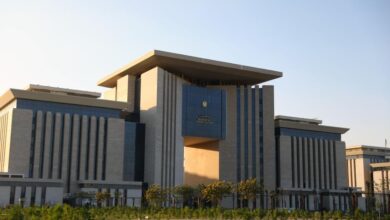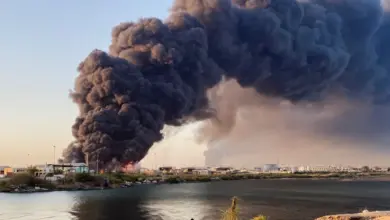
CAIRO (Reuters) – Libya is set to miss a mid-September deadline to fix a framework for elections in December, part of a UN-led effort to reunify and stabilize a country that splintered after the Nato-backed uprising which overthrew Muammar Gaddafi in 2011.
The capital has been shaken by heavy clashes and a militant attack on the headquarters of state oil firm NOC, casting new doubt on the election plan.
What’s behind the latest violence?
Powerful armed groups, including ultra-conservative Salafists and neighborhood militiamen, have consolidated their grip under the watch of the internationally recognized government.
The growing strength and wealth of these “super militias” has stirred resentment among rivals excluded from the capital or from access to lucrative financial scams and the shadow economy.
The splits have also given space to Islamist militants trying to regroup after Islamic State lost its stronghold of Sirte in 2016.
Who controls what?
Since disputed elections and an escalation of fighting in 2014 there have been rival governments, one based in the east and the other in the capital Tripoli.
Tripoli is home to the unelected Government of National Accord (GNA), an interim administration brought in by a UN-brokered deal in December 2015.
The GNA has built some fragile alliances in western regions, but has little popular support or leverage over Tripoli’s militias, on which it depends for its own security.
Eastern Libya is under the control of the Libyan National Army (LNA), led by veteran military commander Khalifa Haftar, a former general under Gaddafi who fell out with the late dictator.
The east-west division has split key institutions and produced a deadlock between the rump parliaments aligned with rival, shifting military factions.
However, international support has allowed the NOC in Tripoli to retain control of fluctuating oil production, a vital source of income.
Energy revenues are processed through the central bank in Tripoli, which disburses state salaries, dollars for importers and funds for the GNA – a process that Libya’s Audit Bureau and UN experts say is riddled with corruption.
Neither the eastern nor western camps have much control over Libya’s south, where communitarian violence sometimes erupts and where smugglers, Islamist militants and mercenaries are active.
How did we get here?
Libya’s faultlines began to show as local groups took up arms seven years ago against the Gaddafi regime, but also against each other.
Militias claiming revolutionary credentials, their numbers swelling as more young men were added to the payroll, hijacked the political process in a country awash with weapons.
Things deteriorated before and after elections in 2014, when a battle for control of Tripoli destroyed the city’s international airport.
Haftar, presenting himself as the scourge of Islamists, began a campaign in Benghazi that took more than three years to complete and left parts of Libya’s second city in ruins.
Islamic State were expelled from Sirte in 2016 by local forces supported by US air strikes, oil production partially recovered as blockaders were sidelined, and migrant smuggling networks were curbed last year under strong Italian pressure.
But without reconciliation, those gains remain fragile.
What’s at stake?
Libya has a population of just 6.5 million but a vast land area with largely unguarded borders.
It has been a source of large-scale smuggling and trafficking of people toward Europe.
Libya has Africa’s largest oil reserves, and is a key supplier of gas to Italy. As conflict has disrupted oil production, Egyptian and Tunisian migrant workers have lost out.
More than one million Libyans need humanitarian assistance, according to the UN.
Why elections?
International efforts to broker a deal between the main factions have repeatedly failed.
The UN deal in 2015 had little support from powerbrokers on the ground. Subsequent efforts to form a unity government with national backing ran aground in rival assemblies in Tripoli and the east, which themselves have only limited legitimacy.
France has pushed for polls as a way to end the stalemate and hosted a summit in May at which the election date target of December 10 was set.
Key figures including Haftar and GNA Prime Minister Fayez Seraj, both potential candidates, have publicly backed the idea of elections. The United Nations cites recent voter registration as evidence that Libyan citizens are keen for a national vote as a way to make a clean break.
Others are more skeptical about early polls, notably Italy, the only Western state to have fully reopened its embassy in Tripoli. It has been vying with France for influence in Libya.
Diplomats say privately that political, security and logistical challenges make a successful vote hard to achieve. The international community’s latest attempts to get the eastern parliament to pave the way for elections have produced little concrete progress.
The assembly, still recognized as the primary legislative chamber, is boycotted by many of its members and controlled by factions that have spurned the UN process and the GNA. They have used procedural delays and sometimes physical force to prevent key votes from taking place.
A Paris summit deadline “to set the constitutional basis for elections and adopt the necessary electoral laws” by Sept. 16 will therefore be missed.
Editing by Ulf Laessing and Andrew Roche.




